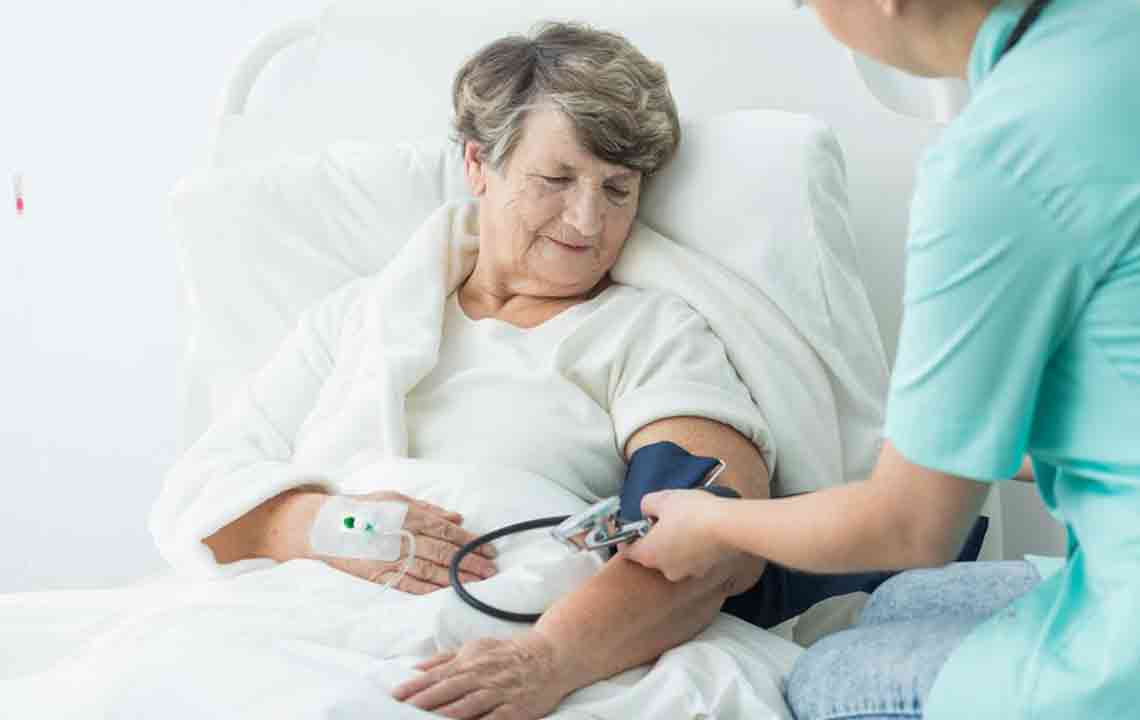Comprehensive Guide to Primary Pulmonary Hypertension: Causes, Symptoms, and Effective Management Strategies
This comprehensive article delves into primary pulmonary hypertension (PAH), exploring its causes, symptoms, diagnostic procedures, and management strategies. It emphasizes the importance of early detection and a multidisciplinary approach to treatment. Readers will learn about genetic and environmental factors contributing to PAH, detailed symptoms to watch for, and various therapeutic options ranging from medications to surgical interventions. The article aims to inform patients and caregivers about the complexities of PAH and empower them to seek timely medical advice for better disease management and improved quality of life.

Understanding Primary Pulmonary Hypertension: Causes, Symptoms, and Management
Primary pulmonary hypertension, often abbreviated as PAH, is a serious and relatively rare medical condition that specifically affects the blood vessels within the lungs. This disorder leads to increased blood pressure in the pulmonary arteries, the vessels responsible for carrying blood from the heart to the lungs for oxygenation. The elevated pressure makes the right side of the heart work harder than normal, which over time can lead to weakening of the heart muscle and eventual failure if left untreated. Despite the challenges posed by PAH, advancements in medical science have provided various management options aimed at controlling symptoms and enhancing the patient's quality of life. While a complete cure remains elusive, early diagnosis and effective treatment can significantly influence disease progression and patient outcomes.
Early Symptoms and Clues
In the initial phases, primary pulmonary hypertension often presents with subtle or no symptoms at all, making early detection difficult. As the disease advances, however, patients may experience increasingly evident signs that interfere with daily activities. Recognizing these symptoms is crucial for timely intervention. Early warning signs include dizziness and lightheadedness, especially during exertion, which may be overlooked at first. Persistent chest discomfort or pain can also occur, often mistaken for less serious conditions. Patients might faint or have episodes of syncope, which can be dangerous if unnoticed. Fatigue becomes more apparent and persistent, even after resting. Breathing difficulties, particularly during physical activity, are hallmark symptoms and tend to worsen over time. Some individuals report a rapid heartbeat, palpitations, and chest pain, which can mimic other cardiac or respiratory illnesses. Cyanosis, characterized by a bluish discoloration of lips and skin, can emerge as oxygen levels drop. Swelling in the legs and ankles, known as edema, is common and becomes more pronounced in advanced stages. In severe cases, abdominal swelling due to fluid buildup indicates worsening heart failure. These symptoms collectively can impair daily functioning and necessitate urgent medical attention.
Understanding the Underlying Causes of PAH
Primary pulmonary hypertension results primarily from structural changes or damage within the pulmonary blood vessels. These alterations lead to narrowing or stiffening of the arteries, which restrict blood flow and elevate pressure within the pulmonary circuit. The precise cause of PAH remains largely unknown, especially in idiopathic cases, which constitute a significant proportion of diagnoses. However, research has identified some genetic and environmental factors that contribute to the disease's development. Genetic mutations, particularly in the BMPR2 gene, are implicated in about 15-20% of cases. These mutations can be inherited and influence the regulation of cell growth in blood vessel walls, making them prone to narrowing. Family history often plays a role, highlighting the genetic component. Besides genetics, other potential causes include connective tissue diseases like scleroderma, systemic sclerosis, and lupus. Infections such as HIV or parasitic diseases like schistosomiasis can damage the pulmonary vasculature. Liver diseases, congenital heart defects, and exposure to certain drugs or toxins have also been linked to PAH. For example, appetite suppressants like fenfluramine and recreational drugs like methamphetamine are known culprits. In some cases, no clear trigger can be identified, leading to a diagnosis of idiopathic PAH, which accounts for a considerable portion of cases. Understanding these factors helps clinicians tailor treatment strategies and identify at-risk populations.
Diagnostic Procedures for Confirming PAH
Diagnosing primary pulmonary hypertension involves a combination of clinical assessment and specialized tests to confirm the presence of elevated pulmonary arterial pressure and exclude other causes. Physicians typically start with a detailed medical history and physical examination. Imaging studies are essential to visualize the heart and lungs. A chest X-ray can reveal enlarged pulmonary arteries or signs of other lung pathology. More advanced imaging, such as Magnetic Resonance Imaging (MRI) or computed tomography (CT) scans, provides detailed views for detecting blood clots, lung abnormalities, or vascular constrictions. An electrocardiogram (ECG) assesses the heart's rhythm and can show signs of right heart strain or hypertrophy, indicative of increased workload. The most definitive diagnostic instrument is the echocardiogram, which estimates pulmonary artery pressures and evaluates heart function and structure in real-time. Sometimes, a right heart catheterization is performed, where a thin tube is threaded into the pulmonary arteries to directly measure pressure and blood flow. These procedures collectively help differentiate PAH from other respiratory or cardiac conditions and establish an accurate diagnosis. Early diagnosis is vital, as it opens the window for timely treatment that can delay disease progression.
Treatment Strategies for Managing PAH
Despite the absence of a definitive cure, there are multiple treatment options aimed at relieving symptoms, preventing complications, and improving overall survival. The management of primary pulmonary hypertension is multidisciplinary, involving medications, surgical interventions, and lifestyle adjustments.
Medications: Various drugs are used based on the severity of the disease and the patient's specific condition. Endothelin receptor antagonists (such as bosentan and ambrisentan) are commonly prescribed to lower blood vessel constriction. Phosphodiesterase-5 inhibitors like sildenafil help relax pulmonary arteries, reducing pressure. Prostacyclin analogs, including epoprostenol and treprostinil, can be administered via infusion to promote vasodilation and inhibit blood clot formation. Soluble guanylate cyclase stimulators are newer agents that enhance vasodilation effects. Combination therapy is often employed for severe cases. These medications aim to improve exercise capacity, reduce symptoms, and slow disease progression.
Surgical and Interventional Procedures: In advanced or refractory cases, surgical options may be considered. Atrial septostomy involves creating an opening between the right and left atria to decompress the right heart and improve blood flow. Lung transplantation may be the ultimate solution for end-stage PAH, offering a chance for prolonged survival and improved quality of life. Heart-lung transplantation is also an option, though it requires careful evaluation of eligibility due to the risks and complexity involved.
Lifestyle Modifications: Patients are advised to adopt lifestyle changes that support management and overall health. This includes maintaining a heart-healthy diet rich in fruits, vegetables, and lean proteins. Regular, moderate exercise under medical supervision can enhance cardiovascular health without overexertion. Weight management is crucial, as obesity can worsen symptoms. Smoking cessation is imperative since tobacco smoke aggravates pulmonary vascular disease. Avoiding exposure to environmental toxins and pollutants can prevent further lung damage. Additionally, patients should monitor their symptoms vigilantly and adhere strictly to prescribed medications. Sleep positioning and elevating the legs may help reduce swelling. Stress reduction techniques and psychological support are beneficial for mental well-being, often affected by chronic illness. With a comprehensive approach that combines medication, lifestyle, and where necessary, surgical interventions, many patients can lead active and fulfilling lives despite their condition.
In conclusion, primary pulmonary hypertension is a complex and potentially life-threatening disease that requires early recognition and a proactive approach to management. Continued research and improved therapeutic options hold promise for better outcomes in the future. Patients are encouraged to work closely with their healthcare team, adhere to treatment plans, and make lifestyle adjustments to improve their prognosis and quality of life. Awareness and education about the signs and risks associated with PAH are essential for early detection and effective treatment.





